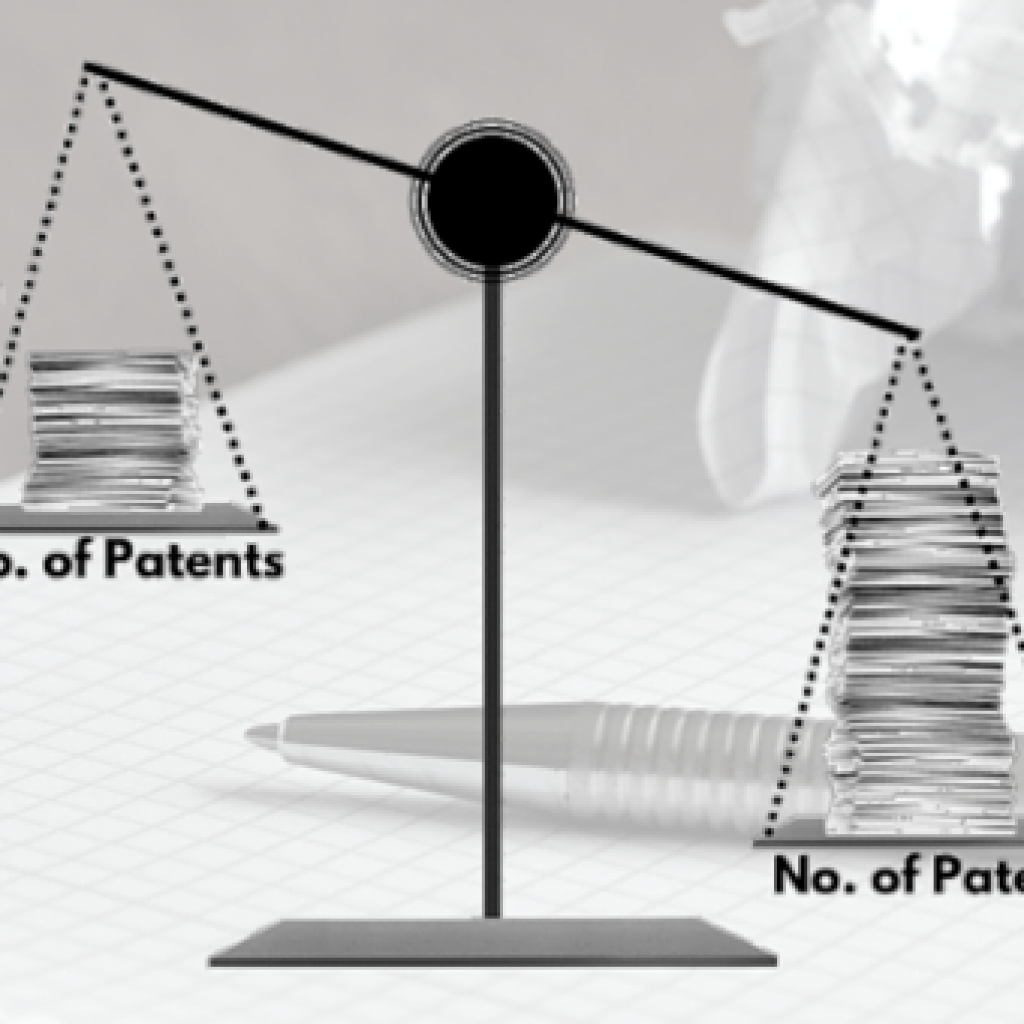Prior-art search is a challenging process in itself. While it is possible to identify relevant prior art based on the claimed numerical value for well-known quantities like thicknesses, volumes, or forces, the task becomes tougher when dealing with less familiar quantities.
For instance, when a patent claims a relationship between fundamental quantities, such as a ratio of forces acting on a body, a ratio of thicknesses, or a volumetric comparison of two cavities, it can be quite difficult to identify suitable prior art.
Although such values typically have a physical significance that’s directly related to well-known physical quantities, inventors and patent attorneys deliberately choose to claim such ratios rather than the well-known physical quantities. The reason behind this choice is to avoid rejections based on prior art, as exemplified in the case of US8675312B2.
Consequently, even during the prior art analysis, these types of quantities pose the most significant challenge and are, therefore, the focus of our case study today.
Working on a patent that claimed a numerical value
Recently, I was tasked with finding prior art for a patent that claimed the “displacement ratio” of an elastic material in a high-speed actuator. The aforementioned “displacement ratio” is the ratio of ‘displacement caused by a force of 0.02 N’ divided by a ‘reference displacement’ (0.04 mm). Additionally, the ratio had to be greater than 5.
I started the research by making search strings and trying various combinations to capture concepts related to displacement ratio.
Despite my targeted search strategies, I couldn’t find relevant literature for the specific numerical value. We were mostly getting references related to the elastic properties of the membrane but nothing specific to the aforementioned ratio. Naturally, when traditional search strategies seemed futile, I picked up the concept of numerical value and dug deeper.
Reframing the Approach of our Prior Art Analysis:
I began exploring broader concepts related to displacement ratios. I started using more general terms and synonyms related to “displacement ratio” to cast a wider net in the search for relevant information.
During this exploration, I found scientific papers and technical documents discussing high-speed actuators. In one of those NPLs, I encountered force vs. displacement graphs. In the patent context, the graphs depicted how the elastic material in the high-speed actuator responds to different forces. Still, it didn’t match the required “displacement ratio” range.
I even performed an image-based analysis – hoping to deduce some values from the graphs. However, they did not satisfy the range of the “displacement ratio” that we needed.
The Breakthrough in this prior art search
Having explored various directions and with no concrete results in hand, I took a step back, and to fill in any gaps, I asked myself the following questions.
Why was I actually searching for these graphs? What details did I want to extract from these graphs?
While I had answered these questions earlier, the answers were lost in the pool of information that I had gathered.
Removing the clutter, I focused on the fact that force-displacement graphs could hold the key to understanding the relationship between the two in elastic materials. This connection reminded me of Hooke’s Law (F=k.x). Hooke’s Law is fundamental in the study of elastic materials, stating that the force applied (F) is directly proportional to the displacement (x) caused, with the stiffness constant (k) as the proportionality factor.
This observation became crucial as I recognized that by analyzing this slope, I could gain insights into the “displacement ratio” that the patent claimed.
I took pen and paper to do elementary mathematical calculations and concluded that, basically, I have to look for a membrane with a stiffness constant (k-value) of less than 0.1 N/mm. If I can figure out a reference with a membrane having (K< 0.1N/mm), our problem is solved.
But the story doesn’t end here.
A Valuable Reference:
I recalled that the reciprocal of the stiffness constant is compliance (C), representing how much the material deforms in response to a given force. Utilizing this information, I calculated that the required “displacement ratio” could be achieved with a compliance value greater than 10 mm/N (C > 10 mm/N).
Now things seemed easier, I just had to find a reference where compliance of the high-speed actuators is greater than 10mm/N, and I could show the exact overlap. Just then, I remembered a primary reference that provided a compliance value of 20 mm/N for a high-speed actuator.
Utilizing the compliance value of 20 mm/N in Hooke’s Law equation, I just had to find the required range/value of the “displacement ratio,” as claimed. And from there, it was a meticulous process of solving the equation. I decided to pen it down clearly and send the same to our client to gather his thoughts on the same.
Shortly after sharing the results, I got the seal of approval from the client.
This journey of exploring force-displacement graphs, connecting them to Hooke’s Law, and conducting mathematical calculations, highlights an important concept when it comes to finding prior art for claims with numerical values. The significance of numerical values lies in their association with known equations or rules, making them invaluable in unearthing potential novelty-destroying arguments.
Experience our prior art search expertise to find hidden (potentially novelty-destroying) arguments.
Simply click the button below and get in touch with our team today.
Authored by: Prabhanjan Mishra, Prior-Art Team
Edited by: Annie Sharma











